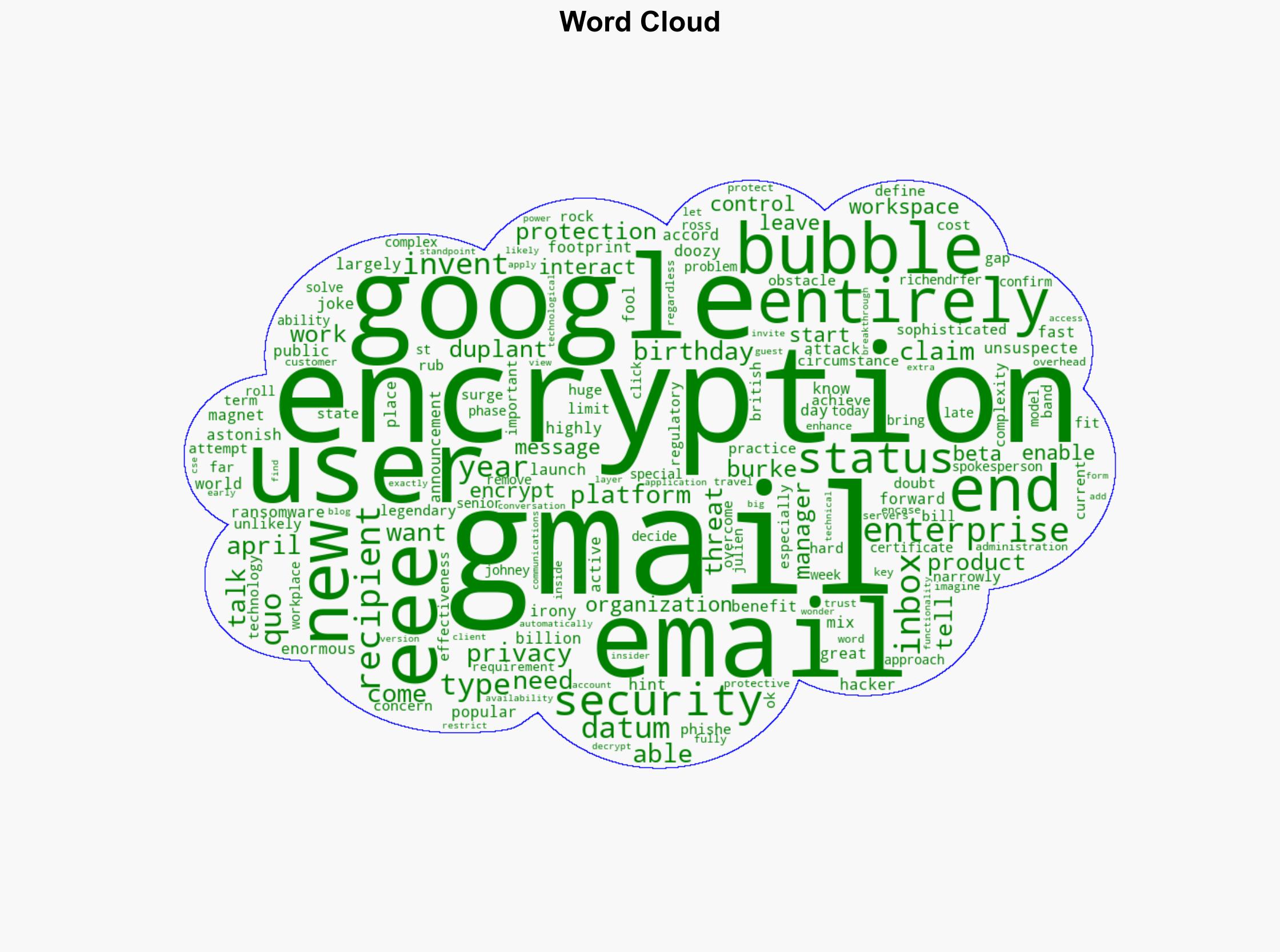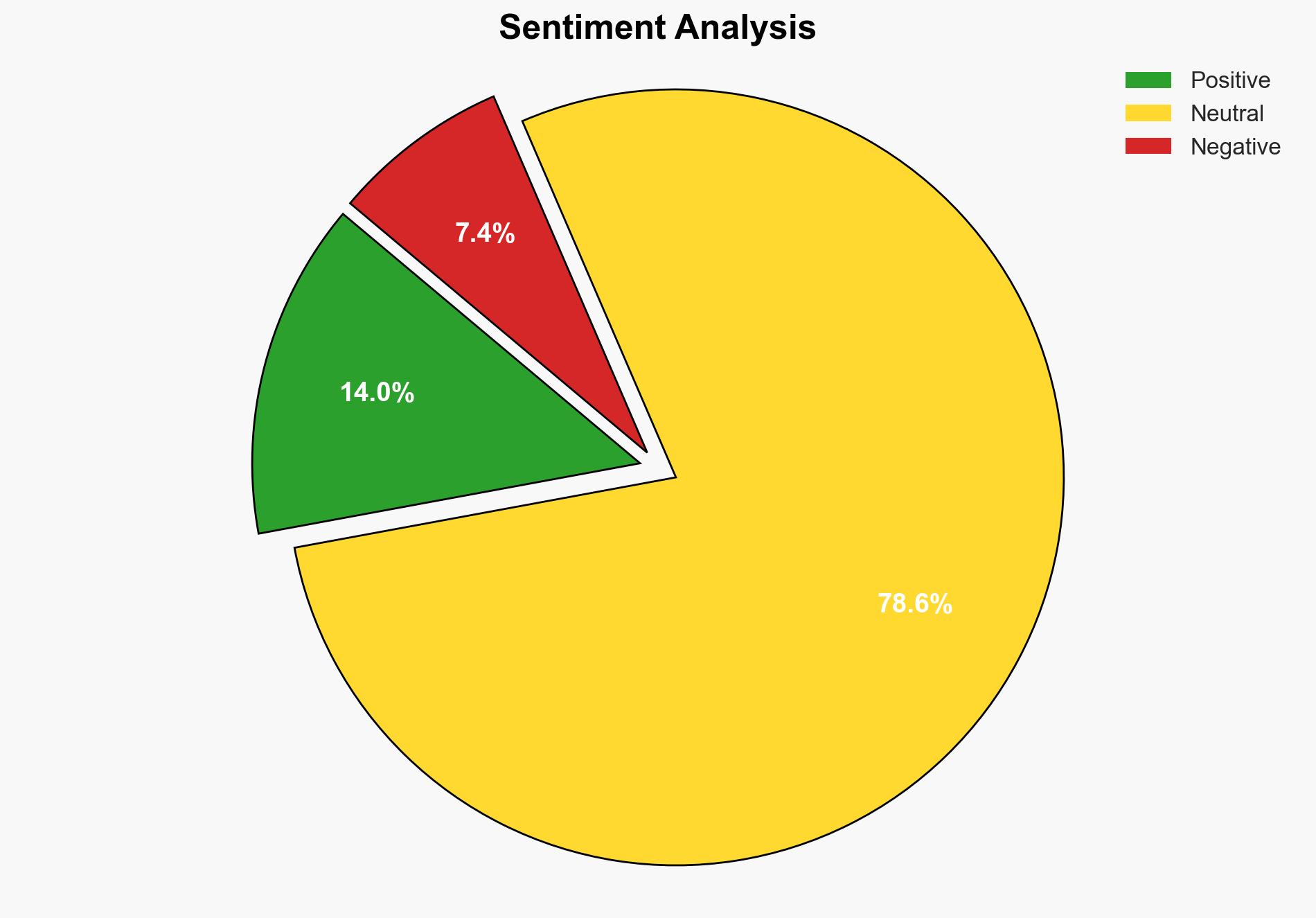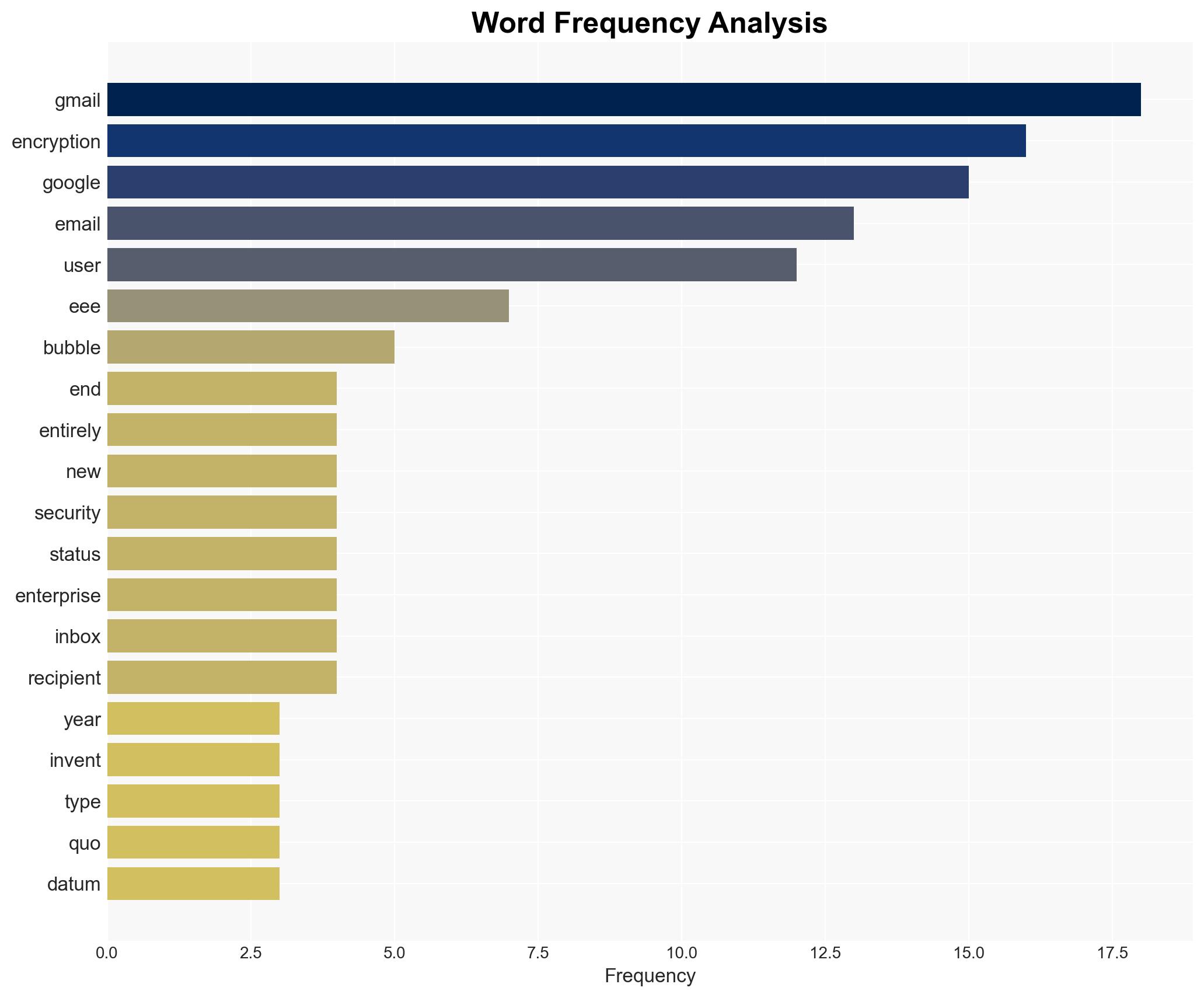Gmail Gets End-To-End Encryption From Google As 21st Birthday Present – Forbes
Published on: 2025-04-01
Intelligence Report: Gmail Gets End-To-End Encryption From Google As 21st Birthday Present – Forbes
1. BLUF (Bottom Line Up Front)
Google has announced the introduction of a new type of end-to-end encryption for Gmail as part of its 21st birthday celebration. This development aims to enhance user privacy and security by providing a protective encryption bubble for emails. The feature is initially available to enterprise users, with plans for broader rollout. This move addresses growing concerns over data protection and phishing threats, positioning Google as a leader in email security innovation.
2. Detailed Analysis
The following structured analytic techniques have been applied for this analysis:
General Analysis
Google’s introduction of end-to-end encryption for Gmail marks a significant advancement in email security. The encryption model, described as a “protective bubble,” ensures that emails remain secure during transmission, regardless of the recipient’s encryption capabilities. This approach eliminates the need for complex certificate management, simplifying the encryption process for users. The initiative reflects a strategic response to increasing cybersecurity threats, including ransomware and phishing attacks, which have targeted Gmail’s extensive user base.
3. Implications and Strategic Risks
The implementation of this encryption technology carries several implications and risks:
- National Security: Enhanced email security could complicate lawful interception and surveillance efforts by government agencies.
- Regional Stability: The widespread adoption of strong encryption may influence global cybersecurity policies and diplomatic relations.
- Economic Interests: Improved data protection could bolster consumer trust, potentially increasing Google’s market share and influencing competitors to adopt similar measures.
4. Recommendations and Outlook
Recommendations:
- Government agencies should engage with Google to understand the technical specifications and potential impacts of the new encryption model.
- Consider regulatory updates to address the balance between privacy and security in light of advanced encryption technologies.
- Encourage collaboration between tech companies and law enforcement to develop solutions that maintain security without compromising privacy.
Outlook:
Best-case scenario: The encryption model is successfully adopted, leading to enhanced user privacy and reduced cyber threats, setting a new standard for email security.
Worst-case scenario: The encryption complicates law enforcement efforts, leading to regulatory challenges and potential conflicts with government agencies.
Most likely outcome: The encryption is gradually adopted by enterprise users, with incremental improvements and broader rollout over time, influencing industry standards.
5. Key Individuals and Entities
The report mentions significant individuals involved in the development and announcement of the encryption technology:
- Ross Richendrfer
- Johney Burke
- Julien Duplant
These individuals are associated with the strategic implementation and communication of the new encryption model within Google.





